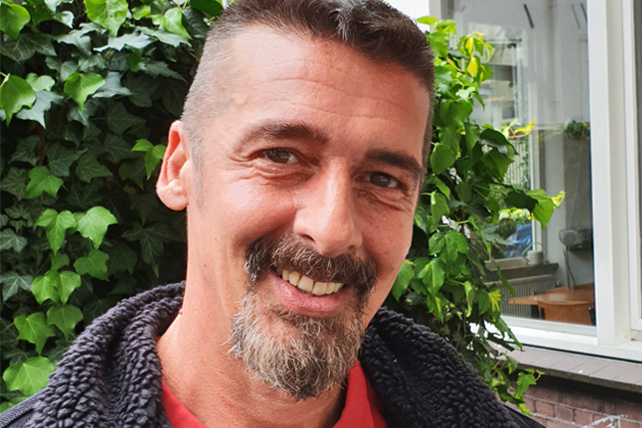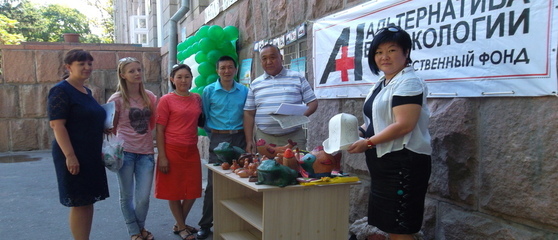A little over a year ago the first harm reduction initiative of its kind was opened in the Ukrainian city of Sumy. The initiative, a safe injection site, demonstrates an innovative approach to harm reduction in the region, and was opened with the support of municipal authorities. By the end of 2019, plans to open a second site in Sumy were in place, with the hope that a similar approach to harm reduction would be implemented across other Eastern European and Central Asian countries.
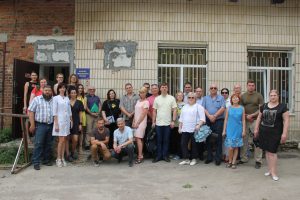
During its first year, the harm reduction initiative in Sumy was visited by municipal delegations of Poltava, Odessa, Kyiv, Chernigov (Ukraine), Balti, Chisinau (Moldova) and Kazakhstan across a series of meetings with the aim of sharing best practices in harm reduction and paving the way for innovative approaches in the EECA region.
Safe injection sites and other harm reduction facilities for controlled drug use
Safe injection sites, also known as safe consumption rooms, drug consumption rooms, or overdose prevention sites, are generally understood as harm reduction facilities where the use of controlled drugs is permitted with supervision.
Such centres address overdose cases with almost 100% efficiency, evidence overwhelmingly suggests. Some reports point to the economic efficiency of such initiatives for national and municipal budgets, since services such as ambulances and emergency healthcare provision are called at lower rates and the likelihood of HIV, TB and hepatitis spread is significantly reduced.
Other repeatedly evidenced positive aspects of such harm reduction initiatives are: reducing crime, improving overall health and quality of life throughout society, reducing the number of “relapses” and improving the socialisation of patients (by supporting the likelihood of a regular job, place of residence and helping to strengthen and restore family ties).
The first harm reduction facility for controlled drug use that was officially approved by municipal authorities and supported by health professionals opened in Bern in 1986 and continues to operate its services.
Back in the early 70s, a community center allowing controlled drug use opened in the Netherlands, providing resources including basic information about health and drug use, food and clothes and clean syringes. The local administration and the police at the time supported the project, but the centre only achieved its official status much later, in 1996.
Today, more than one hundred injection rooms are officially operating in the world: in Switzerland, Germany, France, Canada, Australia, Spain, Luxembourg, Norway, the Netherlands and now in Ukraine.
Harm Reduction in Sumy
Global experience shows us that where harm reduction rooms are introduced as state facilities in societies with a high level of discrimination and criminalisation of people who use drugs, it can be difficult for centres to gain the trust of people for whom the service is operating. In Sumy, this problem was successfully addressed through the involvement of social workers from a non-governmental organisation.
“The approaches to harm reduction in Ukraine have not changed dramatically for 20 years, so the most challenging task now is to gain [the] trust of people who use drugs so that they are not hesitant to use in this municipal space. Everything here is built on trust.” – said a public activist and the facility launch initiator, Oleksiy Zagrebelnyi.
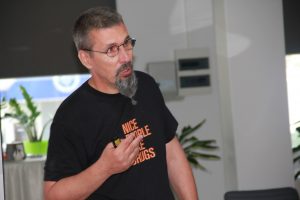
“The result of our activity at the moment is that there are more and more visitors, we began to receive feedback from them, which means that the room is in demand. The services we provide are unique, they are in demand, and it is a success, because the social side of this project has significant benefits for the public”.
A significant example of the benefits of harm reduction rooms is a considerable improvement in the security atmosphere in society and a decrease in the number of complaints to the Sumy authorities regarding the negative consequences of drug use, in particular: littering with used syringes and other means in and around hospital facilities, house entrances, playgrounds and just on the streets; use in public places, etc.
According to Maksym Galitskyi, the deputy mayor of Sumy on health and safety, such appeals have become scarce since the room was opened. “Previously, there were several appeals every week, now we receive one complaint per month. This is an obvious success”, he said.
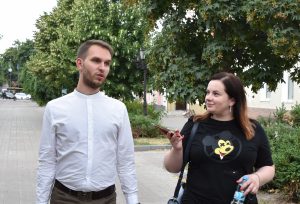
According to the chief doctors of the Sumy Regional Narcological Dispensary, Taras Zlydennyi, approximately 50-70 people visit the harm reduction room every day, and the number of registered patients at the drug dispensary is up to 600 people.
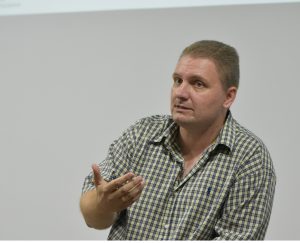
The room provides preventive counseling services to reduce the potential harms of drug use in general and provides information on the consequences of using unregulated controlled substances, offers tests for HIV and hepatitis, counselling services for relatives and family members of people who use drugs, runs a syringe exchange, as well as offering protective and preventive measures for harm reduction.
Political will and the municipal authorities’ consensus are a prerequisite to success
The Sumy approach to harm reduction is unique, because the city managed to dispel stereotypes regarding methods of combating drug dependency. Instead of stigmatising and persecuting people who use drugs, the representatives of the city authorities, law enforcement agencies, the medical sector and NGOs united their efforts and provided the conditions for supervised, hygienic controlled drug use.
Moreover, the harm reduction room is funded exclusively from the city budget – financial assistance from international organisations, the ICF “Alliance of Public Health” and the International Renaissance Foundation was needed only at the start of the project to repair and prepare the premises.
“There are 2 options to fight against any problem – this is either tough prosecution and looking for ways to eradicate, which are often too expensive and do not achieve effective results. The other way is the policy in which we try to reduce harm, thinking about the safety of our citizens”, said Maksim Galitskyi.
“In Ukraine, various officials, often having different mindsets, are responsible for protecting health and safety. This is a national scale problem throughout the country, since there is no single policy-maker in the field of counteracting drug trafficking, and the Ministry of Health has no influence on the Security Services. In Sumy, I am an official responsible for safety and health […] we managed to create a communication platform on which NGOs, together with authorities, reached a certain consensus on this issue”.
The importance of having political will and consensus among different branches of government is also recognised by the regional administration.
“Sumy region was lucky to have officials who are able to understand, realise [and] support such an initiative”, said the ex-head of the staff of the Sumy Oblast State Administration, and the current first deputy Minister of Development of Communities and Territories of Ukraine, Dmytro Zhivitskyi.

“We had political will, and the Head of the oblast administration supported us. Non-governmental organisations took up the function of awareness raising, expert examination and providing international experience for the administration, for the deputies, whose support we managed to gain”
“Taking off in this direction, we realised that we have a well-developed mechanism for making and implementing joint out-of-the-box decisions, which was lacking before this”, he said. – “Back in 2017, we created the oblast Public Health Center, the first full-fledged regional facility. Now we have created a working group, and in mid-July we will adopt the oblast public health program, which will take into account the experience with drug users. That is, our task today is to implement a philosophy of prevention and addressing the causes rather than eliminating the consequences”.
Where in the EECA region are the next harm reduction rooms about to open?
The Sumy harm reduction room was opened at the regional drug dispensary. Local authorities and international organisations provided the startup support for the facility. The success of the initiative, according to representatives of the city’s authorities and non-governmental organisations, has proved its efficiency and expediency.
Public activists from the Moldavian city of Balti showed interest in opening such a room in their city. Moreover, the mayor has previously said that it would be much easier to implement such programs in Balti, because for this you would only need to “copy” Bern’s experience initiated 33 years ago. Now the experience of the Ukrainian city of Sumy will become a best practice.
According to Oleksiy Zagrebelnyi, building works for the second harm reduction room in Sumy are currently underway, and it is planned to open another harm reduction room at the opposite end of the city imminently.
For this, there is already the first successful case study, and all the necessary procedures that have been developed in the course of the current harm reduction room’s progress. Regardless, other cities will have to make some efforts to implement such a project that suits that particular context.
Where to start: expert advice
Experts emphasise that opening a harm reduction room in a new city will involve two important aspects: regulatory and economic issues.
First, it is necessary to analyse the adoption of programs involving work with people who use drugs and the key impacted populations.
“As a rule, local program packages already exist in many cities”, said Yelena Koval, consultant for the International Renaissance Foundation on the availability of pain management medications and drug policy.
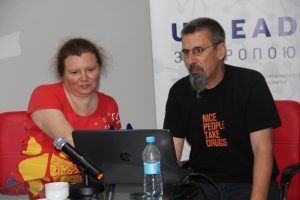
“Among local programs, we need to look for those that have a harm reduction component, analyse at which healthcare facilities such programs work, who is involved there. And then – just imagine that a contaminated syringe can be dropped at the building entrance, on the playground, and calculate how much post-exposure prevention will cost for a person who is accidentally exposed to the contamination. Which resources will be needed in order to deliver medications, how much a treatment regimen will cost?”.
In recent years, cities have demonstrated leadership in improving people’s health and effectively combating HIV, TB, and hepatitis. This trend is crucial at the global level, because today, 55 per cent of the world’s population lives in cities, and it is expected that by 2050, two-thirds of the world’s population will be urban dwellers.
Cities in the EECA region can benefit from the decentralisation of programs and resources, expert community input and best practice from around the world.
This article was originally published by Alliance for Public Health, a leading non-governmental professional organisation making a significant impact on the epidemics of HIV/AIDS, tuberculosis and viral hepatitis in Ukraine. Minor edits have been made for clarity and legibility. You can access the original article here and the Russian translation here.

